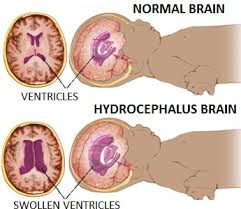Nursing Diagnosis and Interventions for Patent Ductus Arteriosus (PDA)
Nursing Diagnosis for Patent Ductus Arteriosus (PDA)
Nursing Interventions for Patent Ductus Arteriosus (PDA)
1. Maintain adequate cardiac output:
Source : http://fundamentalsnursing.com/
- Decreased Cardiac Output related to malformations of the heart.
- Impaired Gas Exchange related to pulmonary congestion.
- Activity Intolerance related to imbalance between oxygen consumption by the body and oxygen supply to the cells.
- Delayed Growth and Development related to an inadequate supply of oxygen and nutrients to the tissues.
- Imbalanced Nutrition Less than Body related to fatigue at mealtime and increased caloric needs.
- Risk for Infection related to decreased health status.
Nursing Interventions for Patent Ductus Arteriosus (PDA)
1. Maintain adequate cardiac output:
- Observation of the quality and strength of heart rate, peripheral pulses, skin color and warmth.
- Enforce the degree of cyanosis (circumoral, mucous membranes, clubbing).
- Monitor signs of CHF (restlessness, tachycardia, tachypnea, spasms, fatigue, periorbital edema, oliguria, and hepatomegaly).
- Collaboration of drugs in accordance with the order, using toxicity hazard prevention techniques.
- Provide treatment to reduce afterload.
- Give diuretics as indicated.
- Monitor the quality and rhythm of breathing.
- Adjust the position of the child with Fowler position.
- Avoid children from an infected person.
- Give adequate rest.
- Provide optimal nutrition.
- Give oxygen if indicated.
- Allow the child to rest frequently, and avoid disturbances during sleep.
- Encourage to engage in play and light activity.
- Help child to choose activities appropriate to the age, condition and abilities.
- Avoid the ambient temperature is too hot or too cold.
- Avoid the things that cause fear / anxiety in children.
- Assess the level of development of the child.
- Give the stimulation of growth and development, play activities, gaming, watching TV, puzzles, drawing, and others according to the condition and age of the child.
- Involve the family in order to continue to provide stimulation during care.
- Provide a balanced diet, high nutrients for adequate growth.
- Monitor height and weight, documented in the form of graphs to determine the trend of growing children.
- Measure weight every day with the same weight and the same time.
- Record intake and output correctly.
- Provide food with small portions but often to avoid fatigue during meals.
- Children who receive diuretics are usually very thirsty, and therefore not restricted fluid.
- Avoid contact with infected individuals.
- Give adequate rest.
- Provide optimal nutritional needs.
Source : http://fundamentalsnursing.com/

Komentar
Posting Komentar